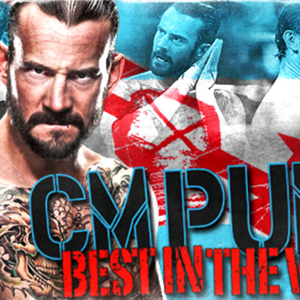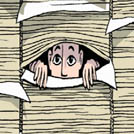
RodeoGuy
London, ON
Male, 23
I live my life 8-seconds at a time as an adrenaline junkie that goes event to event, matching up against some of the rankest bulls in the world in an 8-second battle for supremacy.
Yes, most bull riding schools (2-day clinics) offer junior bull riding or junior steer riding as well, and you can start off on some lighter stock. Just tell the organizer your age and to make sure that there will be stock that is beginner-friendly. I started riding steers in my early teens and moved up to bull riding around your age, so you should be good!
Never happened to me. It is a thrill, but you may be severely injured at any given second. Adrenaline courses through your veins, and focus on winning (and surviving) is all you have. With Bull Riding, it's not "if" you get hurt...it's "when and how bad".... And that could happen before the gate opens, even.
This is a common question and there are a lot of misconceptions about the animals' treatment. The Bulls of today are all of proven lineage, and may exceed 3 or 4 generations of bucking bulls. Just like racehorse breeding, it takes a special bull and cow to make a great bucking bull. Some of the rankest have poor offspring, but some decent ones have amazing offspring. The Cows are tried sometimes as well, so a bucking bull may have great history through just its breeding. The bucking bull industry is a huge industry. Straws of semen are sold for sometimes well over 6 figures, and interests, half interests and ownerships of bulls have exceeded into the millions. For 1/2 breeding rights, a deal was made that included 500,000 and like 6 transport trucks...As an owner, they're about getting their bulls qualified for the big finals' where they get bonuses, year-end awards and big money a "gate" our outing (sometimes a feature bull may get $15,000 / gate, but $250 - $1,200 / gate is kinda the norm) As "calves" - 1.5 year old or so, they are tried out using a mechanical dummy that is really a weight with a remote control on it. They're released from the chute and their natural abilities are pretty obvious at that point, and within about 4 seconds, they dummy is released by remote control. Then after they reach the age of 2 or so, they're tried with a few riders at the farm. When they show up at a bull riding or a rodeo, it's not their first time, and they're used to the routine at that point. This is for protection and the riders' and handlers' protection. The Bulls are very athletic, so much so that they are often referred to as animal athletes. At no point in the process of unloading, feeding, loading into the chute, having the ropes put on them, etc. are they under any pain or duress. As the rider gets over top of him and drops his legs down, we want that bull standing on all 4 feet and still. We're sliding our legs ideally between an 1,800 pound bull and 3" steel bars in the chute...we don't want them to smash our legs, so calm is the key. Ultimately, our industry wants these bulls 100% focused on the job: buck off the rider immediately as that gate opens. When the gate swings, the Bull then goes through his repetoire of moves from Big Leaps, fakes, spins, belly-rolls, high kicks, etc. We want them to be at their peak, and no one is going to kick as hard as they can if they're under any pain. The owners and especially the riders want the bull to be the rankest and best that it can be during that 8-seconds...half the score comes from the Bull, and riders want to win, owners want their bull to be invited to the feature events. They're naturally trying unlodge the rider from the back. We use a "flank strap", a cotton rope that goes around the flank area of the bull to accentuate the bucking pattern. The animal is actually kicking up in a motion to remove the rope. It's not tight, it's more or less just tight enough to stay on, but just loose enough that he can feel it and think to kick it off. Most bulls are so used to it that it's just kind of a reminder of what he's supposed to be doing. Without that type of motion, they would be kicking up towards his front legs posing risk of injury and increasing his rideability. Once the 8-seconds is over, the Bull goes out of the arena, the flank strap is removed, and they basically just hang out with the other bulls for the rest of the weekend. The Bulls work less than 2 minutes a year, and receive royal treatment. Owners are known to treat their best bulls to seperate stalls, matresses, Gatoraide mixtures in water (Electorlytes), etc. But the entire herd is treated like a family member...they are their business investment as well. Our spurs are used merely to get a hold. they are locked rowels that are filed smooth and inspected by the officials. If we were to cut an animal, we would be disqualified totally (again, no money), and potentially fined. A bull's skin is 7-10 times thicker than a human's and where our spurs go is really just fat rolls. When the bull kicks up, his skin goes taught and our spurs go out, and as his front feet hit, we re-position our feet into another roll to hold on again. When we "spur" the bull, it is merely to show the control the rider has, and the exposure to the animal...when you're spurring, you definitely are increasing your chances of being bucked off. But these Bulls will stand practically on their head to get you off their backs. As for agression, that's just their nature. There are some bulls that won't leave the arena until they've run everyone up the fences. There are some that will only go after a rider or bullfighter if they're "in their way", and there are some that have no interest in any of that. They buck, throw the guy, and turn for the gate to leave. But added to their size, their unpredictable nature is almost an equivalent. Lastly, any neglect towards these animals isn't tolerated. The owners and officials don't tolerate it, and neither will the riders. We have the utmost respect for these animals.
I agree with whatever any woman says... haha. Bull Riding is a tough, physically demanding sport. There are some women that have competed in it that are tough than most guys going; but it's not for everyone. Center of gravity is a big part of it... and men just naturally have that advantage. Taking a beating is another, and it's a special breed of person that can continue going back at it. There have been select female bull riders almost making it "big", one in the PRCA two years ago, and one in the PBR last year... but as you climb the ladder, the bulls get ranker, and I think they have fizzled going for the top tier. I think female bull riders ride at a disadvantage, but the ones that succeed in getting on again... I have the utmost respect for. One day, there will be a feature female bull rider in the PBR BFTS. I think it will be soon.
Casino Dealer
 How do you prove that someone is card-counting?
How do you prove that someone is card-counting?
School Teacher
 How do you see parents failing in their children's education?
How do you see parents failing in their children's education?
Social Security Employee
 Did the US economic collapse cause a surge in disability applicants?
Did the US economic collapse cause a surge in disability applicants?
4-5 years old is really where they start to come to form, and they can continue into their early teens. Bucking Bulls are cattle, so they're herd animals, and are usually pretty easy to raise, as long as you have strong enough fences to keep a herd of them in. 90% of them are not aggressive or overly territorial in the pasture / on the lot, and being in the bucking bull business doesn't make them any more difficult to handle. I would imagine it is the opposite as they are actually handled and see more human interaction than bulls in the beef and dairy industry, etc. During their career they get to breed a bit, and afterwards, they are usually left to breed as much as they'd like. As their owners have watched them grow up and spent many days caring for them and travelling with them, they become more like pets, and get to live out their lives on the pasture. And similar to the big race horses laid to rest at Churchill Downs, the good ones are laid to rest on the ranch.
It definitely varies by level, but one thing is consistent: you pay to play. If you don't place in the money, usually top 5 per round and/or overall event rankings, you go home empty handed. There are no performance fees or per diums. I always laugh at how the two major finals' in our Industry are in Las Vegas, Nevada; you'll never find bigger gamblers than Cowboys. We always bet on ourselves. Each event we pay an "entry fee" ranging from $50 - $250 plus. It truly is a struggle. When you're in a slump, you are down. You still have to get to the next event: fuel, flights, food, hotel, entry fees. We find traveling partners which definitely helps with some of the expenses, and makes it easier if at least one of us is in the money. We've had to slide through a hotel lobby with bags in hand to hit a continental breakfast, haha. We're like glorified carnies sometimes. The average event will pay a thousand to a few thousand to win at the mid-level. A lot of Bull Riders are "weekend warriors", working all week to afford to compete on the weekend, even at the mid-high levels. But it's a catch-22. There are some big bull ridings on weeknights which makes it hard to get on the road as much as you'd like. Starting at semi-pro, the top earner made $26,000 At the second from top-level: the top earner earned $238,000 At the premiere level: the Professional Bull Riders (PBR), the top annual earnings last year was over $460,000...and then the top-earner gets a $1,000,000 bonus (1.4 million total). As things roll, you actually have membership cards in various associations and some events are not affliated with an organization "tour", so, especially in the Summer, you can hit 4 events a week, maybe more, and depending on how much you want to travel, at least 1-2 a weekend in the winter, but you have to haul. It really depends on where you're geographically located. But the big money events you can hit 1-2 a weekend for about 3/4's a year. So, somewhere in the 50-70 event range if you're travelling hard.
There are no salaries. You pay to compete, ie. enter, and hope to earn rewards, ie. prize money. The only "base" you can get is if you obtain a sponsor or an agent. As for annual earnings: Starting at semi-pro, the top earner made $26,000 At the second from top-level: the top earner earned $238,000 At the premiere level: the Professional Bull Riders (PBR), the top annual earnings last year was over $460,000...and then the top-earner gets a $1,000,000 bonus (1.4 million total).
-OR-
 Login with Facebook
Login with Facebook (max 20 characters - letters, numbers, and underscores only. Note that your username is private, and you have the option to choose an alias when asking questions or hosting a Q&A.)
(A valid e-mail address is required. Your e-mail will not be shared with anyone.)
(min 5 characters)
By checking this box, you acknowledge that you have read and agree to Jobstr.com’s Terms and Privacy Policy.
-OR-
 Register with Facebook
Register with Facebook(Don't worry: you'll be able to choose an alias when asking questions or hosting a Q&A.)